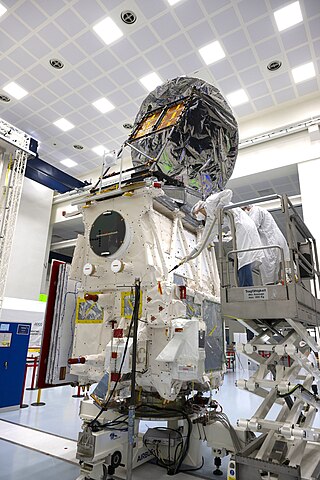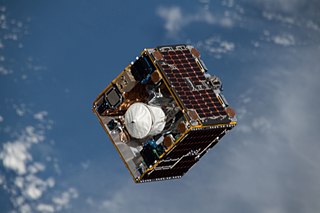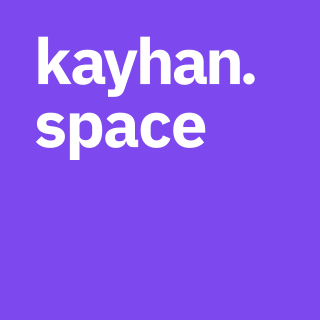
Space debris are defunct human-made objects in space – principally in Earth orbit – which no longer serve a useful function. These include derelict spacecraft, mission-related debris, and particularly-numerous in-Earth orbit, fragmentation debris from the breakup of derelict rocket bodies and spacecraft. In addition to derelict human-made objects left in orbit, space debris includes fragments from disintegration, erosion, or collisions; solidified liquids expelled from spacecraft; unburned particles from solid rocket motors; and even paint flecks. Space debris represents a risk to spacecraft.

The Japan Aerospace Exploration Agency (JAXA) is the Japanese national air and space agency. Through the merger of three previously independent organizations, JAXA was formed on 1 October 2003. JAXA is responsible for research, technology development and launch of satellites into orbit, and is involved in many more advanced missions such as asteroid exploration and possible human exploration of the Moon. Its motto is One JAXA and its corporate slogan is Explore to Realize.

Space Exploration Technologies Corporation, commonly referred to as SpaceX, is an American spacecraft manufacturer, launch service provider, defense contractor and satellite communications company headquartered in Hawthorne, California. The company was founded in 2002 by Elon Musk with the goal of reducing space transportation costs and ultimately developing a sustainable colony on Mars. The company currently operates the Falcon 9 and Falcon Heavy rockets along with the Dragon and Starship spacecraft.
Surrey Satellite Technology Ltd, or SSTL, is a company involved in the manufacture and operation of small satellites. A spin-off company of the University of Surrey, it is presently wholly owned by Airbus Defence and Space.
The Institute for Unmanned Space Experiment Free Flyer (USEF) (財団法人無人宇宙実験システム研究開発機構) was a Japanese space agency, which was founded by the Ministry of International Trade and Industry in 1986. Unlike NASDA, ISAS, and NAL, it was not included in the JAXA organization, which was founded in 2003. The chairperson is Ichiro Taniguchi.

An orbital propellant depot is a cache of propellant that is placed in orbit around Earth or another body to allow spacecraft or the transfer stage of the spacecraft to be fueled in space. It is one of the types of space resource depots that have been proposed for enabling infrastructure-based space exploration. Many different depot concepts exist depending on the type of fuel to be supplied, location, or type of depot which may also include a propellant tanker that delivers a single load to a spacecraft at a specified orbital location and then departs. In-space fuel depots are not necessarily located near or at a space station.

EarthCARE is a joint European/Japanese satellite, the sixth of ESA's Earth Explorer Programme. The main goal of the mission is the observation and characterization of clouds and aerosols as well as measuring the reflected solar radiation and the infrared radiation emitted from Earth's surface and atmosphere.
Space Infrastructure Servicing (SIS) is a spacecraft concept being developed by Canadian aerospace firm MDA to operate as a small-scale in-space refueling depot for communication satellites in geosynchronous orbit.
The Mission Extension Vehicle (MEV) is a spacecraft that extends the functional lifetime of another spacecraft through on-orbit satellite servicing. They are 2010s-design small-scale in-space satellite-refueling spacecraft first launched in 2019. The MEV spacecraft grew out of a concept proposed in 2011 by ViviSat, a 50/50 joint venture of aerospace firms US Space and Alliant Techsystems (ATK). The joint venture was created in 2010 for the purpose of designing, producing and operating the MEV program.

A space tug is a type of spacecraft used to transfer spaceborne cargo from one orbit to another orbit with different energy characteristics. The term can include expendable upper stages or spacecraft that are not necessarily a part of their launch vehicle. However, it can also refer to a spacecraft that transports payload already in space to another location in outer space, such as in the Space Transportation System concept. An example would be moving a spacecraft from a low Earth orbit (LEO) to a higher-energy orbit like a geostationary transfer orbit, a lunar transfer, or an escape trajectory.

The Epsilon Launch Vehicle, or Epsilon rocket, is a Japanese solid-fuel rocket designed to launch scientific satellites. It is a follow-on project to the larger and more expensive M-V rocket which was retired in 2006. The Japan Aerospace Exploration Agency (JAXA) began developing the Epsilon in 2007. It is capable of placing a 590 kg payload into Sun-synchronous orbit.

Planet Labs PBC is a publicly trading American Earth imaging company based in San Francisco, California. Their goal is to image the entirety of the Earth daily to monitor changes and pinpoint trends.

Eutelsat OneWeb is a subsidiary of Eutelsat Group providing broadband satellite Internet services in low Earth orbit (LEO). The company is headquartered in London, and has offices in Virginia, US and a satellite manufacturing facility in Florida – Airbus OneWeb Satellites – that is a joint venture with Airbus Defence and Space.
The ClearSpace-1 mission is an ESA Space debris removal mission led by ClearSpace SA, a Swiss startup company. The mission's objective is to remove a VESPA from orbit. The mission aims to demonstrate technologies for rendezvous, capture, and deorbit for end-of-life satellites and to build a path to space junk remediation. Destructive reentry will destroy both the captured satellites and itself.
Relativity Space Inc. is an American aerospace manufacturing company headquartered in Long Beach, California. Relativity Space is developing manufacturing technologies, launch vehicles, and rocket engines for commercial orbital launch services. The company is notable for manufacturing most of their Terran 1 and Terran R rocket parts using 3D printing.

RemoveDEBRIS was a satellite research project intending to demonstrate various space debris removal technologies. The mission was led by the Surrey Space Centre from the University of Surrey with the satellite's platform manufactured by Surrey Satellite Technology Ltd (SSTL). Partners on the project included Airbus, ArianeGroup, Swiss Center for Electronics and Microtechnology, Inria, Innovative Solutions In Space, Surrey Space Centre, and Stellenbosch University.
The Innovative Satellite Technology Demonstration Program is a series of spacecraft missions for testing technology and ideas put forward by universities and private companies. The program demonstrates various experimental devices and technology in space by providing flight opportunities. It is managed by the JAXA Research and Development Directorate. According to JAXA, the goal of this program is to test high risk, innovative technology that will lead to the space industry gaining competitiveness in the international field.
DRUMS is an experimental spacecraft that will test proximity operation near space debris. The microsatellite carries two 'mock space debris' which once deployed will be used as a target for demonstrating approach and contact.

Kayhan Space Corp. doing business as Kayhan Space is an American space technology company based in Boulder, Colorado. Founded in 2019, their products have been centered on space-related activities. Focusing on space awareness, Kayhan Space has made products such as Pathfinder for dodging space debris and other satellites.

Orbit Fab is an American startup based in Lafayette, Colorado, United States, that develops in-space refueling systems for satellites.















